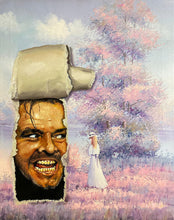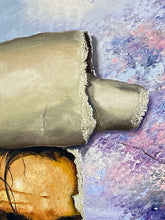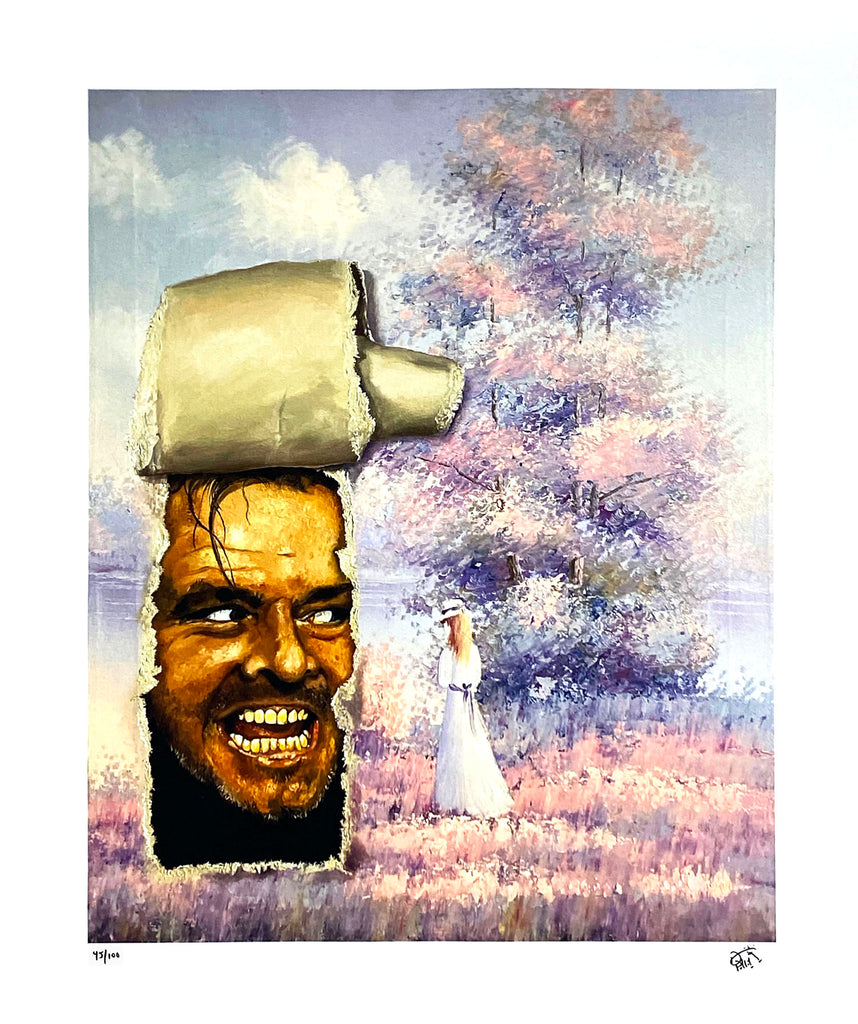'All Work and No Play' by Dave Pollot, 2020
The artist's tribute to the 1980 horror classic "The Shining".
24 x 20 Inches
61 x 50.8 Centimeters
Giclée print on bright white pH neutral 17mil cotton canvas (rolled).
Limited Edition of 100 (#45/100)
Hand-signed and numbered by the artist in thin black marker.
ARTIST BIO
Dave Pollot is a New York based artist who is known for his altered thrift art paintings. He finds unwanted artwork and adds his own touch – most often pop culture parodies – and in doing so, bridges the divide between classic and pop art.
His artwork has been displayed and found homes in galleries, businesses, and private collections in all 50 states and in over 40 countries around the globe. His work has attracted attention from the media both in the U.S. and abroad, including Business Insider, Instagram, and the SyFy Channel, and his corporate clients include SONY, Instagram, and McDonalds among others.
When he’s not painting, he can be found spending time with his wife and two dogs.
ARTIST STATEMENT
“Painting has always been something of a hobby to me, but it wasn’t until I started repurposing thrift art in 2012 that I did it with any real consistency. The idea actually began as a joke between my wife (who loves to shop at thrift stores) and I, but it quickly evolved into an attempt to answer a question: Could I take a piece of unwanted art, and without changing its aesthetic, change its meaning by painting into it some bit of pop culture/nostalgia and make it desirable in the modern world? Since that time, I’ve also started to explore a number of more personal themes in my work. For example, using popular food items inserted into still life paintings to represent the distractions (both mental and material) that prevent us from being present and focused on where we are and what we’re doing.
Painting has now become something of an obsession for me. If I spend too much time away from my easel, I find that I start to get very restless – I like to describe it as itchy blood. As much as I’ve always loved to paint, I found that I often lost interest in whatever it was that I was working on before it was ever close to being finished. Reworking found art turned out to be the answer to this problem. Each new piece presents a new set of challenges, and learning to work in a variety of styles and master new techniques has kept my attention. It’s also an interesting challenge to develop a narrative and tell a story with a painting – the backgrounds provide the framework I use to build a story.
I’ve always loved the idea that art is deeply personal. I’m telling my own story with each piece, but every one is a little bit like a mirror, reflecting it’s meaning back to the viewer through his or her individual perception. More generally speaking however, there are a number of recurring questions and ideas that my work often deals with. I think that my body of work has challenged the idea that any one piece of artwork is without a place, especially if it can be retrofitted to reflect a more culturally relevant set of ideas. It’s also questioned the idea of who (generationally and otherwise) can claim ownership of the pop culture of a given time period – it’s sought to introduce a younger audience to older artistic styles, and a potentially older audience to a broader set of pop culture.”
- Dave Pollot




























